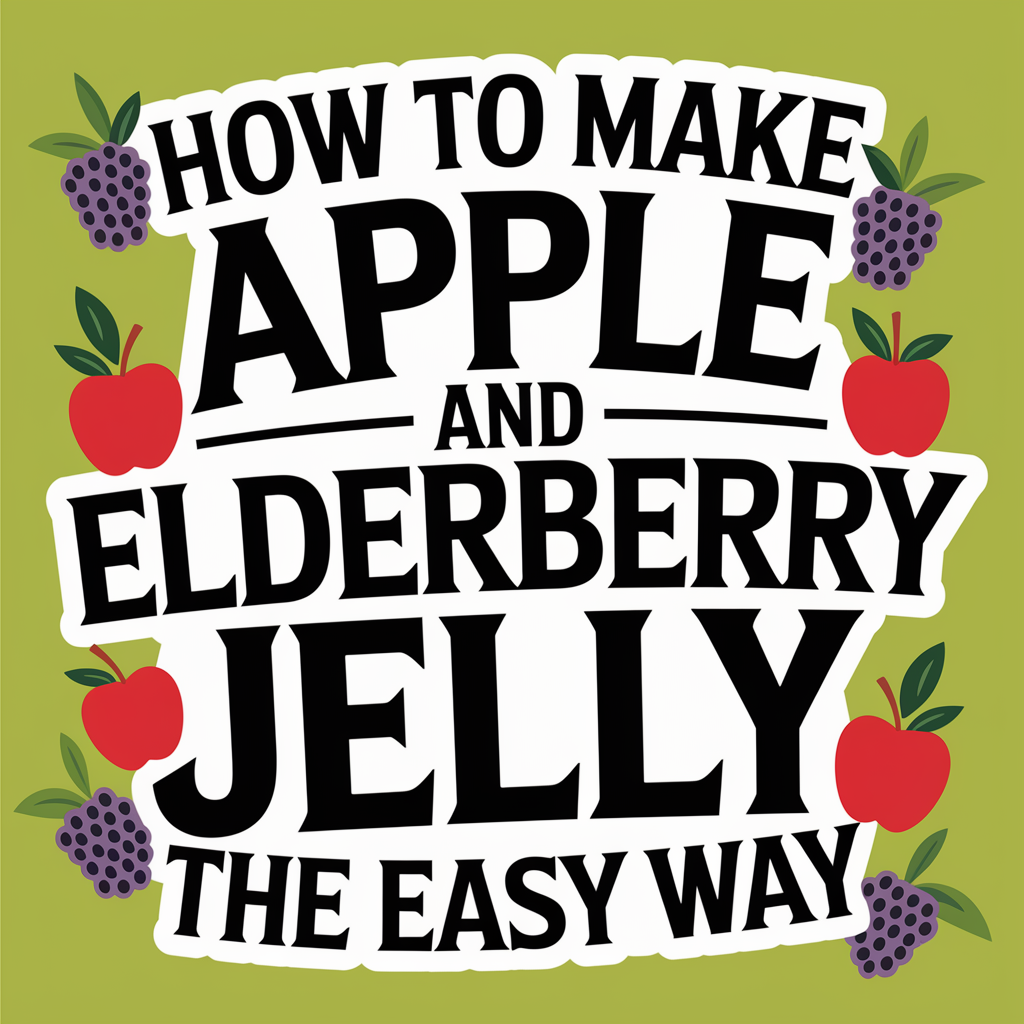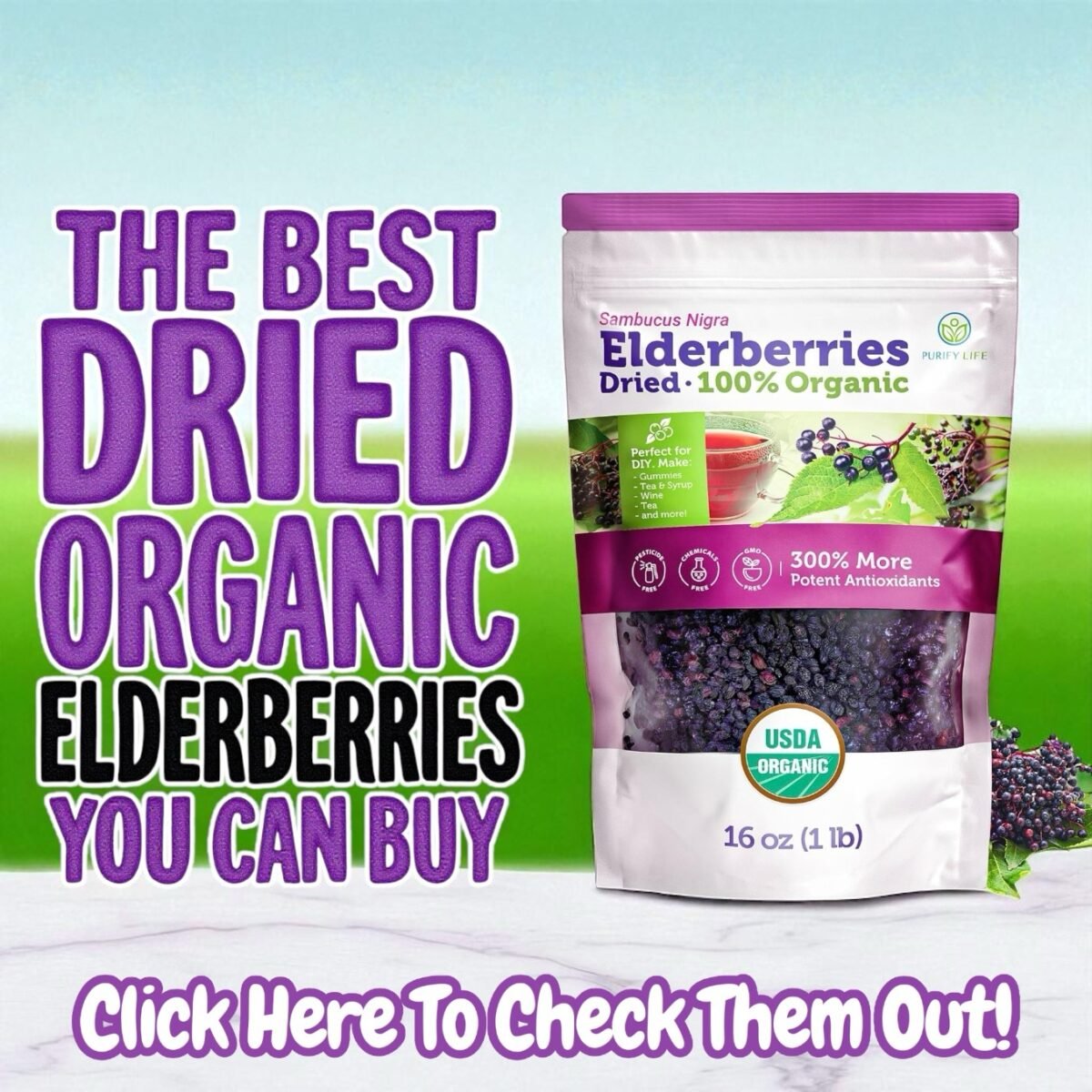
The Sweet Rise of Apple and Elderberry Jelly
If you’ve never tried the bold, rich flavor combo of apple and elderberry jelly, let me tell you—you’re missing out on a pantry staple that deserves way more attention. This isn’t your average jelly. It’s tart, sweet, nostalgic, and surprisingly easy to make at home.
I first stumbled into making apple and elderberry jelly when we had more elderberries than we knew what to do with. We were already making 🍯 elderberry syrup by the gallon for immune support, and whipping up 🍬 elderberry gummies as daily treats. But when the apples from our backyard trees started falling faster than we could eat them, it hit me: why not combine the two?
Not only do elderberries and apples taste incredible together, but their natural pectin content makes them ideal for a perfect jelly set—no store-bought pectin needed if you’re using tart apples like crab apples. The combo also carries an old-fashioned charm that brings back memories of grandma’s kitchen and mason jars cooling on the windowsill.
Plus, with elderberries known for their seasonal allergy support (here’s what I’ve learned 👉 does elderberry help with allergies?), this jelly becomes more than just a treat—it’s functional food.

Why Apples and Elderberries Are a Match Made in Jelly Heaven
There’s something magical about the balance between apple and elderberry when they simmer together. Apples are naturally sweet, mild, and packed with pectin—especially the less-sweet, firm varieties like Granny Smith or crab apples. Elderberries, on the other hand, bring bold, deep purple color and a tart flavor that really comes alive with a little sugar.
If you’ve ever had straight elderberry syrup, you know it’s rich and earthy. Pairing that with the crisp brightness of apple levels it out beautifully, giving the jelly complexity and balance. This is why elderberry and apple jelly has become a go-to in our house, especially around fall when both fruits are in full swing.
This duo is more than just delicious—it’s also practical. Apples stretch the elderberries further, making it more affordable and easier to set, especially if you’re not using added pectin. If you’re already making 🍇 elderberry syrup at home, the leftover juice and pulp can easily be repurposed into a small batch of jelly, minimizing waste.
We’ve even gone a step further some seasons and tested a batch with crab apple and elderberry jelly, which gives you a more tart, robust finish—perfect for slathering over hot biscuits or using as a glaze on roasted meats.
Apple and Elderberry Jelly vs Jam: What’s the Real Difference?
Let’s clear up a common confusion. If you’re wondering whether you should call your homemade blend a jam or a jelly, here’s the deal:
Jelly:
- Made from strained fruit juice.
- Has a smooth and clear consistency.
- Spreads easily and looks a bit glossy.
Jam:
- Made from mashed or whole crushed fruit.
- Contains visible chunks of fruit or pulp.
- Thicker and often a little messier (but just as delicious).
When it comes to combining apples and elderberries, it’s totally up to you. Some folks love the refined finish of a true jelly, while others crave the texture you get from a hearty jam. Personally, I like having both on hand—one for toast, one for pairing with meats or cheese.
If you’re more into the jam side of things, check out this fun post on what makes elderberry jam unique and why it’s gaining attention among homesteaders.

Choosing the Best Apples for Elderberry Jelly
The kind of apples you choose for your jelly makes a big difference. Some apples are naturally high in pectin, which helps your jelly firm up without needing any added help. Others might taste great but make your jelly runny unless you add pectin.
Here’s a quick cheat sheet to help:
Great Apple Choices:
- Crab apples – Tart, high in natural pectin, and perfect for that old-school jelly texture.
- Granny Smith – Sharp and firm, great for mixing with elderberries.
- Jonathan – Classic apple flavor, excellent for depth.
Apples to Limit:
- Gala or Fuji – Sweet and juicy but low in pectin.
- Red Delicious – Not very flavorful in cooked recipes.
If you’re working with apples from your own orchard, you’re already ahead of the game. I’ve talked before about using elderberries from your own backyard — and the same mindset applies here. Fresh, local, and seasonal always wins.
And if you’re raising kids like I am, it’s not a bad idea to get them involved. Let them help pick apples or stir the pot (carefully). Once they taste the finished jelly on a warm biscuit? They’ll be hooked.

How to Store Your Homemade Apple and Elderberry Jelly Properly
After all that hard work creating your batch of apple and elderberry jelly, the last thing you want is spoilage. Storing your jelly the right way makes a huge difference in how long it lasts and how fresh it tastes months later.
For Short-Term Enjoyment
If you plan to eat your jelly within a few weeks, you can simply store it in the fridge. Use a clean glass jar with a tight-fitting lid. The cold temperature will keep it fresh, but always check for any signs of mold or fermentation if it’s been in there for more than a few weeks.
Long-Term Canning
Want your apple and elderberry jelly to last all year? Canning is the way to go.
- Use proper water bath canning techniques.
- Sterilize your jars and lids.
- Leave about 1/4 inch of headspace at the top when filling.
- Process jars in boiling water for 10 minutes (adjusting for altitude).
When sealed properly, your jelly can last up to a year (sometimes longer) in a cool, dark pantry.
Label and Date Everything
Don’t forget to add a label with the date you canned it. Trust me, six months from now you’ll be glad you did! If you make different versions (like one batch with crab apples and one without), label those too so you can compare flavors later on.

Creative Ways to Use Apple and Elderberry Jelly
Sure, jelly on toast is a classic, but don’t stop there. This fruity and slightly tangy combo opens the door to all kinds of fun ways to enjoy it.
Topping Ideas
- Warm it up and drizzle it over vanilla ice cream – a surprisingly amazing combo.
- Serve with a charcuterie board – this jelly pairs beautifully with creamy brie or sharp cheddar.
- Use as a glaze for roasted pork or grilled chicken – the natural sugars caramelize deliciously.
- Mix into Greek yogurt for a sweet and tangy breakfast.
Baking and More
Add a spoonful into thumbprint cookies, swirl it into muffin batter, or even use it as the center layer of a jelly roll cake. You can even mix a little with olive oil and balsamic vinegar for a fancy fruit vinaigrette.
Want more ideas like this? You can check out our other homemade elderberry creations at ElderberryPro.com, where we dive deep into fun, healthy, and unique ways to use elderberry.

Where to Get the Best Elderberries (and Apples) for Jelly Making 🍇🍏
The key to incredible apple and elderberry jelly always starts with fresh, quality fruit. If you don’t grow your own, it’s important to source from trusted, reliable places—especially with elderberries, which need to be fully ripe and properly processed.
For Elderberries
If you’re looking for the best elderberries, either fresh or dried, ElderberryPro.com has you covered with real advice and product recommendations from those who use elderberry daily. Whether you’re after 🍇 premium dried elderberries, elderberry syrup kits, or simply want to learn more about the health benefits of elderberry, you’ll find it all there.
You can also explore these helpful articles while you’re here:
- Can My Kids Use Elderberry Vitamins Everyday? – great info if you’re making jelly for the whole family!
- Does Elderberry Help With Allergies? – especially helpful if you’re trying this recipe for seasonal support.
- Are Elderberries Poisonous to Dogs? – a must-read for pet owners who make elderberry recipes at home.
For Apples
You can use just about any apple variety for jelly, but tart ones like Granny Smith or sweet-tart ones like Honeycrisp work best when paired with elderberry’s earthy punch. If you’re lucky enough to have your own apple trees, even better! But if not, check your local farmer’s market—or even grow your own with help from our friends at Weaver Family Farms Nursery.
As an Amazon Associate we earn from qualifying purchases through some links in our articles.